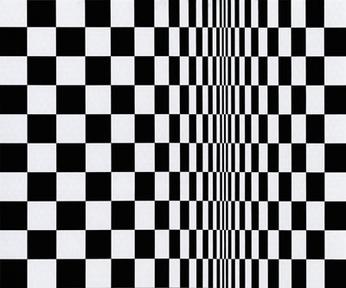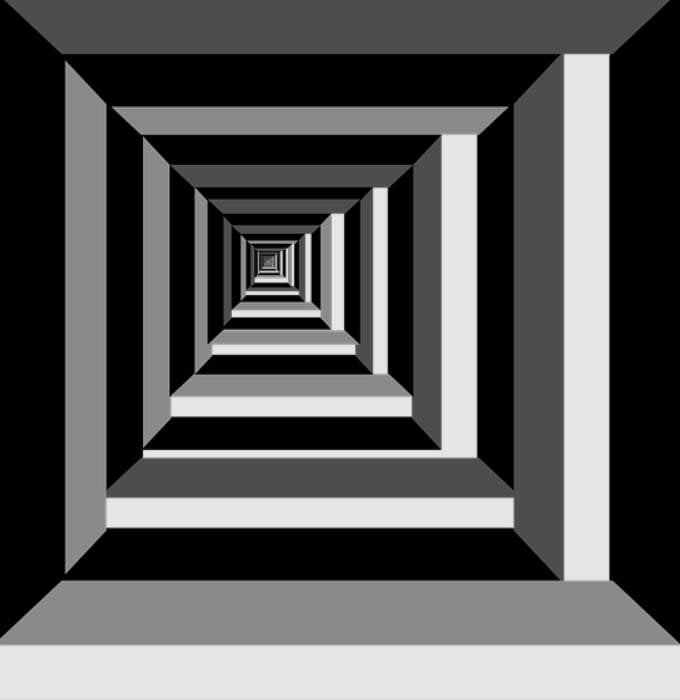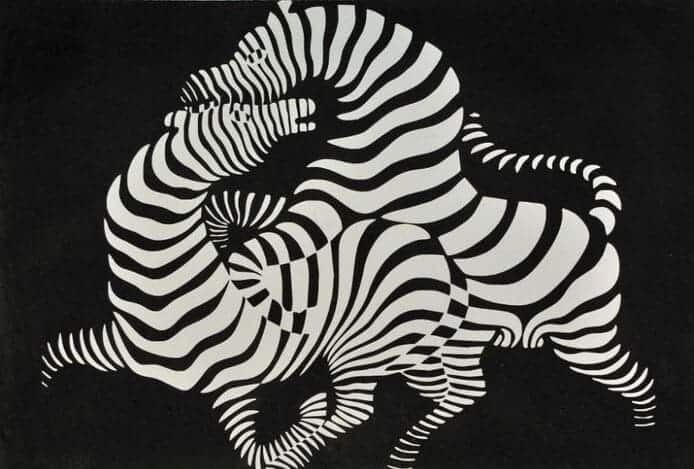Introduction
Art can remarkably stimulate the human mind and stir our emotions. It takes us on journeys through colours, shapes, and forms, challenging our perceptions and evoking a wide range of sensations. One such captivating and enigmatic genre of art that emerged in the mid-20th century is Op Art, short for Optical Art. Op Art is not just a visual experience; it’s a journey into the area of illusion, movement, and dynamic perception.
As a movement, Op Art burst onto the global art scene in the 1960s, during a cultural and social upheaval period. It was a time when artists were exploring new ways to break free from traditional artistic conventions and experiment with the very essence of visual perception. Rooted in a combination of artistic innovation and scientific understanding, Op Art pioneers set on a journey to explore the limits of what the human eye could perceive and how the mind could interpret visual stimuli.
Op Art is characterized by a mesmerizing interplay of geometric shapes, patterns, and colours, meticulously arranged to create mind-bending optical illusions. These illusions often challenge the viewer’s sense of space, depth, and movement. In a world where reality and illusion constantly overlap, Op Art becomes a portal into the complexities of human perception, inviting viewers to question the very nature of what they see.

In this article, we will be looking into the world of Op Art, exploring its historical roots, defining characteristics, and the innovative techniques employed by its artists. We will shine a spotlight on the works of some of the most influential Op Art figures and dissect their contributions to the movement. Furthermore, we will examine how Op Art compares to and distinguishes itself from other prominent art movements of the era.
As we journey through the corridors of Op Art, we will uncover its profound impact on the art world and its enduring legacy. Beyond the annals of history, we will also explore how Op Art continues to shape contemporary artistic expression, transcending the boundaries of time and space.
So, fasten your seatbelts, as we embark on a visually stimulating adventure into the world of Op Art, where perception and imagination intertwine to create an art form like no other.
Historical Context
To truly appreciate Op Art, it’s essential to understand the historical context in which this fascinating art movement emerged. The roots of Op Art stretch back to the mid-20th century, a time marked by significant cultural and societal changes, as well as advancements in science and technology.
1. Post-War Optimism and Experimentation
Op Art came into its own during the 1960s, a period characterized by post-World War II optimism and a desire for fresh, innovative approaches in various fields, including the arts. After the horrors of war, society was eager for a break from the past, and artists were determined to break free from traditional artistic norms. This era of experimentation led to the birth of numerous avant-garde movements, including Op Art.
2. Scientific Influence
One of the unique aspects of Op Art is its strong connection to scientific principles, particularly those related to visual perception. Artists were inspired by breakthroughs in psychology and optics, such as Gestalt psychology, which explored how the mind organizes visual information into meaningful patterns. They were also influenced by the study of colour theory and the psychology of colours, which helped them create the striking visual effects central to Op Art.

3. Bridging Art and Science
Op Art represented a convergence of art and science like never before. Artists sought to merge artistic creativity with scientific rigour, creating a fascinating synergy. This interplay between disciplines allowed Op Art to transcend traditional artistic boundaries and become a bridge between the art world and the scientific community.
4. The International Scene
Op Art wasn’t limited to a specific geographic location; it was a global phenomenon. Artists from various countries, including the United States, the United Kingdom, France, and Hungary, contributed to the movement. This international aspect allowed Op Art to flourish in diverse cultural and artistic contexts, making it a truly global movement.

5. Influences from Preceding Movements
Op Art didn’t emerge in isolation; it was influenced by earlier art movements. Artists were inspired by the abstract geometrical works of artists like Wassily Kandinsky and Kazimir Malevich. The Bauhaus movement’s emphasis on the integration of art and design also played a role in shaping Op Art’s aesthetic principles.
In this historical context, Op Art emerged as a response to the changing times, a fusion of artistic expression and scientific inquiry, and a reflection of the desire to explore the boundaries of human perception. This marriage of art and science gave birth to a visually stunning movement that continues to intrigue and inspire art enthusiasts and scholars alike.
Feature Image: Victor Vasarely, Zebras, 1938. Courtesy: Artland Magazine
“Bridget Riley: Mastering Optical Illusion Through Colorful Geometry”

Contributor





